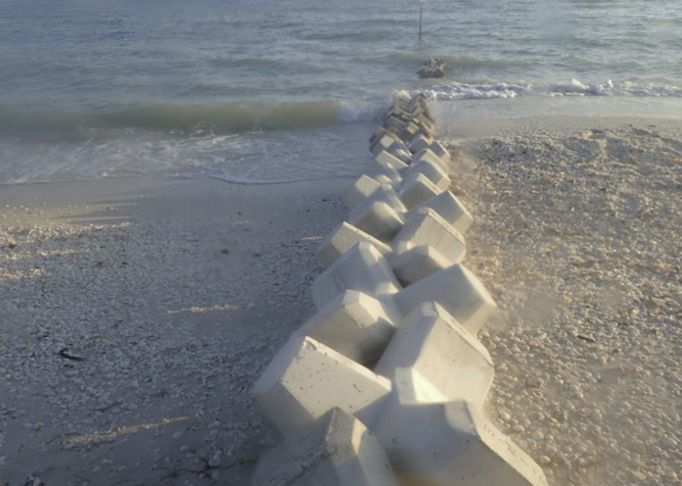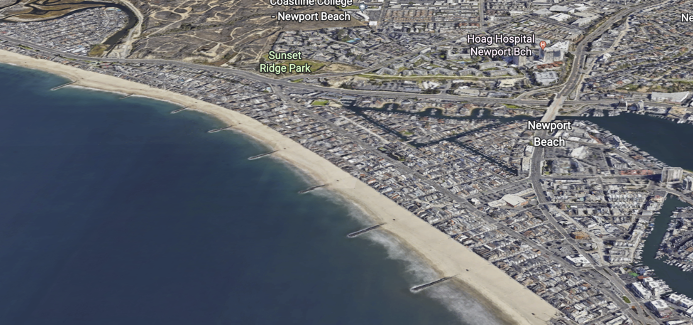Groins are constructed perpendicular to the shoreline and may extend several hundred feet past the beach. A group of groins is called a groin field. They may be constructed of boulders (rip-rap), concrete, metal sheet piles, geotextile sand bags, or wood.
Where there is a dominant direction of longshore transport, sediment builds up (accretion) on the updrift side. This can have the tendency to starve the downdrift side of the groin and cause erosion, unless the groin is properly designed.
Design constraints include the length, height, and spacing of the groins. The longer the groin, the more effective it will be at trapping sand, however the greater the risk of down-current erosion. The groin may be completely emergent or partially submerged.
Groins
Groins may have different shapes, including T-groins and Y-groins, also called Head Groins. The shore-perpendicular aspects of these groins act more like breakwaters, decreasing wave energy and further assisting with sand trapping.
Groins may also be classified as permeable or impermeable. Permeable groins are traditionally constructed of wood or concrete pilings, with more modern variations including interlocking concrete polygons.
In California, groins work best on slopes oriented E/W or NW/SE
Kinsman & Griggs (2010) studied 211 engineered structures on California's coastline. Shoreline orientation was very important, between 240-310o being the best, with south-facing shores showing the greatest effectiveness. The length of the structure was also important. Pre-filling of the fillet was vital. High net littoral drift was also important (more longshore drift than offshore transport). Kinsman & Griggs 2010.
Likewise, Everts Coastal (2002) stated “In Southern California, the most effective shore-connected sediment-block structures, such as groins, are located where the bearing of the open coast shoreline is between 240 and 310-320 degrees and there is substantial net longshore transport rate.”
For example, in southern California, at Will Rogers State Beach, waves typically approach the shore at an oblique angle, and the groin field exhibits an obvious pattern of upstream accretion and downstream erosion. Note that these relatively short groins are still effective shoreline protection for the updrift side, but there is significant narrowing of the beach on the down-drift side.
In Newport Beach, the beach was completely eroded when the City installed 600-foot-long groins and backfilled with 300 feet of sand. These groins are much longer than those at Will Rogers State Beach. There are no obvious patterns of up-current accretion or down-current erosion.
The Newport Beach groins, due to their length, work more like breakwaters than groins. The rock piles reduce wave energy, cause refraction and diffusion, and create eddies of sand movement within each cell. The groins extend out to water depths approaching the “depth of closure”, meaning that no sand moves beyond the groin. This effectively traps the sand within each cell.
Newport Beach does differ from San Clemente, however. It has a wider shelf, a more abundant source of sand, and a shoreline orientation more suited for groin placement.
Groins could be designed to mimic natural headlands
Groins are often regarded as "hard coastal armoring" but they can be designed to mimick natural headlands such as the coastline of Laguna Beach, which act to create small "pocket beaches" between the headlands. In this way, more naturalistic groins could be designed as a "Nature-Based Solution."
Groins don’t necessarily cause sediment starvation down coast
Groins tend to block the natural longshore flow of sand, and can inadvertently “starve” the down-coast shoreline of sand. However, this situation can be avoided through proper design and an initial backfill with adequate amount of sand.












